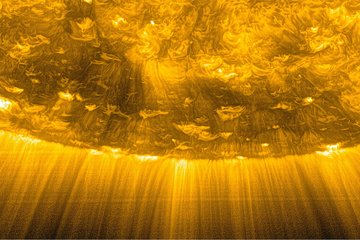All genres
1.
Journal Article
Planetesimal formation during protoplanetary disk buildup (Corrigendum). Astronomy and Astrophysics 671, p. C10 (2023)
2.
Journal Article
Origin of Isotopic Diversity among Carbonaceous Chondrites. The Astrophysical Journal 946, p. L34 (2023)
3.
Journal Article
Leaky dust traps: How fragmentation impacts dust filtering by planets. Astronomy & Astrophysics 670, p. L5 (2023)
4.
Journal Article
Rapid formation of exoplanetesimals revealed by white dwarfs. Nature Astronomy 7 (2022)
5.
Journal Article
Rapid formation of massive planetary cores in a pressure bump. Astronomy and Astrophysics 668, p. A170 (2022)
6.
Journal Article
Dust-to-Gas and Refractory-to-Ice Mass Ratios of Comet 67P/Churyumov-Gerasimenko from Rosetta Observations. Space Science Reviews 216, 44 (2020)
7.
Proceedings
Modeling the formation of carbonaceous chondrite parent bodies. EAS2024, Padova, Italy, 2024. (2024), 1640 pp.










